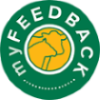Livestock Data Link (LDL)

Livestock Data Link (LDL) has been replaced by an industry-first single-source data program named myFeedback.
myFeedback combines the benefits of carcase and eating quality data with animal disease and defect insights in one place, enabling more accurate benchmarking of carcase performance for all users.
For more info and to access myFeedback please vist: www.mla.com.au/myfeedback